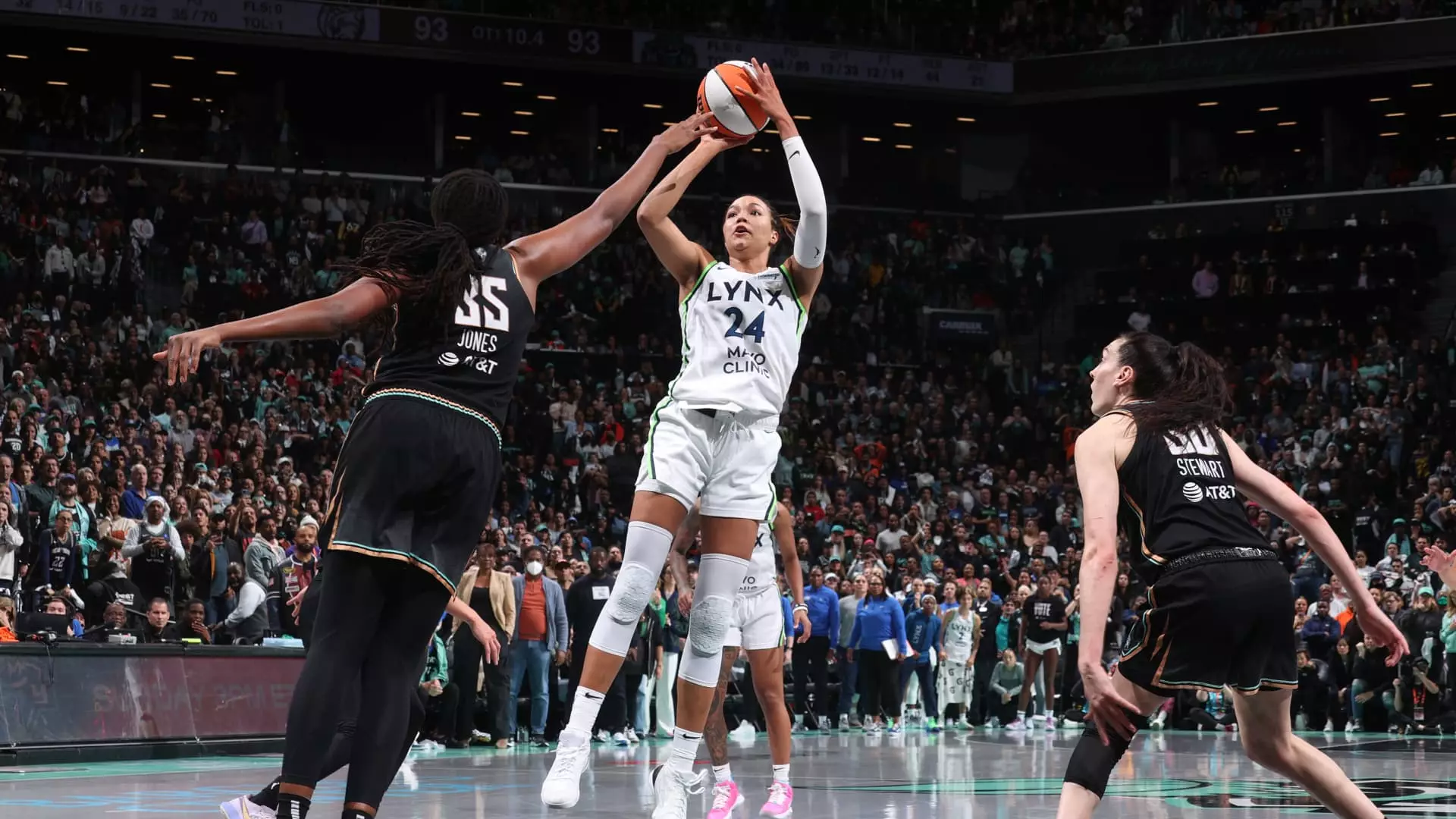The Women’s National Basketball Association (WNBA) is on the cusp of a transformative season in 2025, ushering in a new era of opportunity and engagement for players and fans alike. The league, under the leadership of Commissioner Cathy Engelbert, is expanding its regular season and playoff structure, a decision that reflects the growing prominence and fan interest in women’s basketball.
Beginning next year, the WNBA will extend its schedule from 40 to 44 games per team. This increase is more than just a numbers game; it signals the league’s burgeoning popularity, which has surged in recent years. Engelbert highlighted the significant rise in viewership and engagement metrics, indicating that fan demand could no longer be ignored. The expansion of the regular season allows teams to showcase their talent more frequently and provides fans with additional opportunities to witness thrilling performances.
Furthermore, the Finals series will shift from a five-game format to a best-of-seven format beginning in 2025. This change is crucial as it elevates the stakes and drama of the championship, allowing for a more comprehensive showcase of skill over a longer series. The new 2-2-1-1-1 format grants the higher-seeded team the advantage, ensuring that the most successful teams during the regular season have an edge in the playoffs.
The playoff structure is also set for a significant revamp, moving to a system where the three-game first round alternates hosts. This alteration gives home-court advantage to teams regardless of seeding, promoting fairness and competition. Engelbert noted that these playoff modifications were in discussion since the impacts of the Covid-19 pandemic became apparent, but the rapid rise in the league’s popularity and the introduction of charter flights for teams catalyzed the changes.
Considering the recent influx of emerging stars such as Caitlin Clark and Angel Reese alongside established icons like Breanna Stewart and A’ja Wilson, the WNBA has never been more electrifying. The combination of seasoned players and fresh talent has undoubtedly enriched the league’s narrative, captivating audiences and generating excitement around each game.
Expansion of Teams and Growth Strategy
In addition to the changes in the game schedule, the WNBA is expanding its team roster significantly. The Golden State Valkyries are set to debut in 2025, becoming the 13th team in the league. Plans for two additional expansion teams in Toronto and Portland, slated to begin play in 2026, emphasize the league’s aim to tap into new markets and further diversify its fanbase. Engelbert’s proactive strategy to consider a 16th team underlines the league’s commitment to growth and accessibility.
This strategic expansion also aligns with the league’s lucrative media rights deal, valued at $2.2 billion for the next 11 seasons, which reflects the financial backing and confidence from networks in the WNBA’s potential. The collaboration with the NBA’s media contract also aids in amplifying visibility and generating higher revenue streams, crucial for sustaining growth.
Challenges in the Spotlight
However, the growth does not come without challenges. As the league gains traction, more players have reported experiences of racism and online harassment. This aspect is concerning and raises questions about the responsibilities of the league, its governance, and Commissioner Engelbert herself. While Engelbert has condemned such behavior in the wake of criticism, the issue emphasizes the ongoing struggle against harassment in sports, particularly in women’s leagues.
Engelbert’s recent statements indicate an awareness of these challenges, but they also highlight the need for proactive measures to ensure a safe and supportive environment for players. Combatting harassment and advocating for equality should be at the forefront of the league’s goals as it moves forward.
As the WNBA prepares for this dynamic evolution, the 2025 season promises to be a pivotal year showcasing thrilling basketball and intensified competition. The league is poised to not only increase its fan engagement but also reinforce its standing in the realm of women’s sports. With the introduction of new teams, an adaptive playoff format, and a commitment to addressing pressing issues, the WNBA is positioning itself as a leader in women’s athletics and an inspiration for future generations. Fans can look forward to witnessing not just a game, but a movement that strengthens the visibility and impact of women’s sports.

